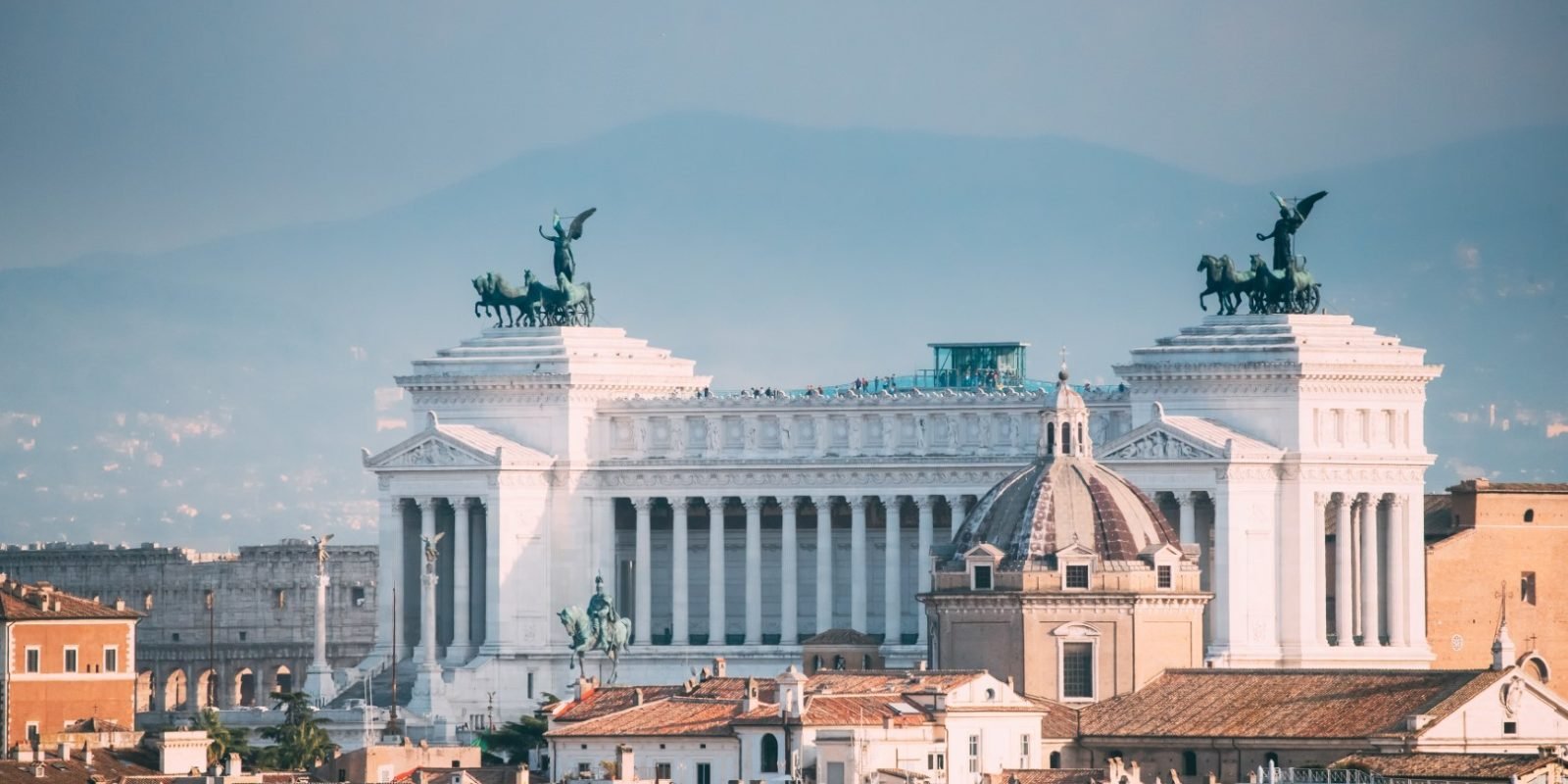Piazza Venezia, a central hub of Rome, stands as a vibrant tapestry woven with history, architecture, and the bustling rhythm of modern life. With its iconic monument, historical significance, and strategic location, it’s a must-visit for travelers seeking to immerse themselves in the heart of the Eternal City. In this comprehensive guide, we’ll explore what makes Piazza Venezia worth visiting, what to see and do, how much it costs, how long to spend, and essential tips for travelers.
What Makes Piazza Venezia Worth Visiting?
Piazza Venezia serves as a focal point where ancient and modern Rome converge. Its centerpiece, the imposing Monumento a Vittorio Emanuele II, is not only an architectural masterpiece but also a symbol of Italy’s unification. It’s one of the top Rome tourist attractions as well. The square’s strategic location, with its numerous roads radiating outwards, makes it a crossroads of history and a gateway to some of Rome’s most famous landmarks.
Piazza Venezia History
Piazza Venezia, located in the heart of Rome, is one of the city’s most iconic squares and is steeped in history. Its name, which translates to “Venice Square,” is derived from the nearby Palazzo Venezia, a palace that served as the embassy of the Venetian Republic to the Papal States during the Renaissance. Here is a brief overview of the history of Piazza Venezia:
- Ancient Origins: Piazza Venezia stands on the site of the ancient Campus Martius, a field used by the ancient Romans for various activities, including military exercises and elections. Over time, the area became more urbanized.
- Papal Palace: In the 15th century, the Palazzo Venezia was constructed. It served as the residence of several notable figures, including Pope Pius IV and Pope Paul II. Later, it became a museum.
- Mussolini’s Balcony: One of the most famous features of Piazza Venezia is the large balcony on the Palazzo Venezia, known as the “Altar of the Fatherland” or the “Vittoriano.” During Benito Mussolini’s rule, this balcony was used for his speeches and public addresses.
- Monument to Vittorio Emanuele II: The most prominent structure in Piazza Venezia is the Monumento a Vittorio Emanuele II, also known as the Vittoriano. This grand white marble monument was built in honor of Victor Emmanuel II, the first king of a unified Italy. Construction began in 1885 and was completed in 1911.
- National Memorial: The Vittoriano is not only a monument to King Victor Emmanuel II but also serves as a national memorial to Italian soldiers who died in various wars. The Tomb of the Unknown Soldier is located within the monument, and it is guarded by the changing of the guard ceremony.
What to See and Do at Piazza Venezia
- Monumento a Vittorio Emanuele II: The monument, often referred to as the Altare della Patria or Il Vittoriano, is a colossal structure honoring Italy’s first king and celebrating its unification. Admire its grandeur, intricate details, and panoramic terraces offering breathtaking views of Rome.
- Palazzo Venezia: Visit the historic Palazzo Venezia, which houses a museum showcasing art, historical artifacts, and exhibitions. The palace’s central balcony, from which Mussolini once addressed the public, adds to its historical significance.
- Capitoline Hill: Just steps away, Capitoline Hill offers a collection of museums, including the Capitoline Museums, displaying a treasure trove of ancient sculptures, artifacts, and art.
- Explore the Roman Forum: From Piazza Venezia, you can embark on a journey through ancient Rome by exploring the Roman Forum and reliving the history of the Roman Empire.
- Shopping and Dining: Piazza Venezia is surrounded by shops, cafes, and restaurants. Take a leisurely stroll, indulge in some retail therapy, or savor a meal while absorbing the lively ambiance.
How Much Does it Cost to Visit?
Admission to Piazza Venezia is free. As a public square, the piazza is open to all visitors without any entry fees. This makes it an accessible and budget-friendly destination for all travelers.
How Long to Spend at Piazza Venezia?
The amount of time you spend at Piazza Venezia depends on your interests and the activities you choose. To fully appreciate the monument, explore its terraces, and perhaps visit the nearby attractions, plan to spend about 1 to 2 hours in the square. This will give you enough time to explore the monument, take in the panoramic views, and even venture into nearby sites such as Palazzo Venezia or Capitoline Hill.
Tips for Travelers
- Terrace Access: Don’t miss the opportunity to ascend the Monumento a Vittorio Emanuele II’s terraces. The panoramic views of Rome’s iconic landmarks are breathtaking, especially during golden hours.
- Combine Visits: Its central location makes it an excellent starting point to explore nearby attractions like the Roman Forum, Colosseum, and Capitoline Hill.
- Be Mindful of Traffic: Piazza Venezia is a busy traffic hub with multiple roads converging. Exercise caution when crossing streets and be aware of the flow of traffic.
- Guided Tours: Consider joining a guided tour to gain deeper insights into the historical and cultural significance of the square and its surrounding landmarks.
- Avoid Midday Heat: If visiting during the warmer months, consider planning your visit to Piazza Venezia in the morning or late afternoon to avoid the midday heat.
- Sun Protection: If you plan to spend time on the terraces or exploring nearby sites, bring sunscreen, sunglasses, and a hat to protect yourself from the sun.
- Capture the Moment: The grandeur of the monument and the panoramic views offer excellent photo opportunities. Don’t forget your camera!
Piazza Venezia, with its monumental tribute to Italy’s unification and its historical significance, stands as a dynamic intersection of Rome’s past and present. Whether you’re drawn to the architectural marvels, eager to explore nearby historical sites, or simply intrigued by the lively atmosphere, a visit to Piazza Venezia promises an enriching experience. As you stand before the Monumento a Vittorio Emanuele II and take in the panoramic views, you’ll find yourself immersed in the vibrant spirit of Rome and its timeless charm.




